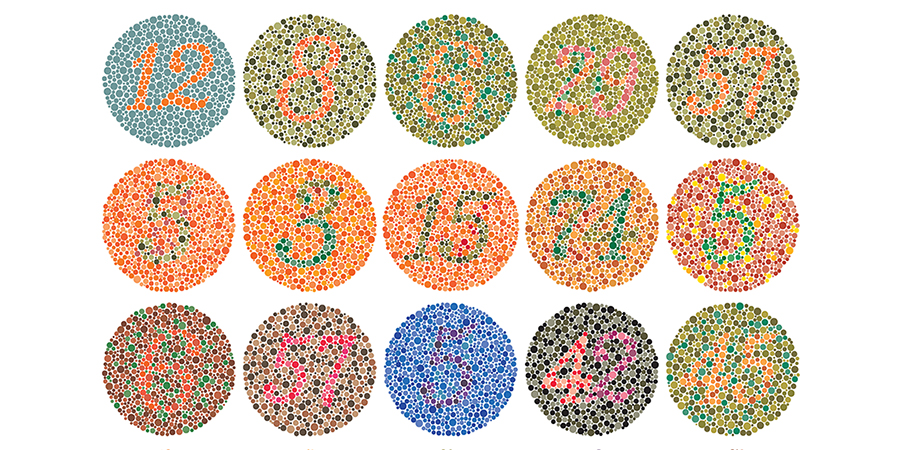What is Colour Blindness?
Normal colour vision allows people to see a vibrant range of colours. Colour blindness, however, means seeing things a bit differently. It affects how colours are seen, sometimes making it hard to tell the difference between, say, reds and greens. This isn’t exactly an illness but more about how the eyes interpret colours.
People with colour blindness often can’t see the full spectrum of colours most can. For example, traffic lights can look confusing, as the red and green lights might appear similar. But remember, it’s not about what you can’t do; it’s about finding solutions and options that suit your needs.
Types of Colour Blindness
There are a few types of colour blindness. The most common type is red-green colour blindness. People with this type confuse these two colours.
Red-green: Affects males more often and can make reds and greens hard to distinguish.
Blue-yellow: This is less common, making it tough to tell blues and yellows apart.
Complete colour blindness: Very rare, seeing everything in shades of gray.
Colour blindness might be something you’re born with, known as inherited, or acquired due to other conditions or medications.
Why is Treatment Essential?
Getting the right colour blindness treatment is about improving life in small but substantial ways. Treatments can brighten daily experiences and help in distinguishing colours clearly. Seeing colours correctly can boost confidence, make social interactions smoother, and even assist with job opportunities.
Identifying and dealing with this early helps everyone, especially in countries like India where cultural interactions are colourful but dependent on recognising colours correctly. Inclusivity matters, and this extends to being able to choose the right clothing, cooking without hassle, and even enjoying art without restraints. Enhancing life quality through effective colour vision deficiency treatment can be a game-changer.
Current Colour Blindness Treatment Options
Even though a color blind cure isn’t available, there are ways to manage and improve vision to enjoy the colours around us.
Special Eyewear Solutions
Special glasses are a popular color blind solution. Brands like EnChroma offer glasses that help see colours more vividly. These glasses filter light in a way that enhances certain colours the wearer usually struggles with.
However, they’re not perfect for all environments. Indoors or at night, their effectiveness can drop. Plus, cost can vary, making it essential to check if they’re worth the investment considering your lifestyle and needs.
Technological Aids
Technology is a friend in helping with colour challenges. Various apps and software are designed to assist with colour recognition.
Mobile Apps: Apps can scan and name colours.
Software Tools: There are digital tools that hint or outright label colours to assist in daily tasks.
These tools offer a color blind therapy approach to dealing with daily challenges seamlessly.
Managing Underlying Causes
Sometimes, colour blindness isn’t standalone. Issues like ageing or certain medicines can affect colour vision. It’s crucial to talk to a healthcare provider if colour changes are sudden.
They can suggest steps to manage symptoms of colour blindness and direct you to suitable colour blindness treatment options.
Practical Strategies for Daily Living
Adapting daily life with something as simple as tweaking routines helps a lot.
DIY Techniques: Try labeling coloured items at home.
Clothing Tips: Arrange outfits by texture or pattern.
Workplace Support: Use labels and tags to help with tasks.
Navigating daily tasks with these simple hacks ensures living a colourful life feels achievable.
Future Treatments in Development
There’s energy and hope in current research. Ongoing work in gene therapy is like a beacon for potentially effective future colour vision deficiency treatment.
Prospective treatments aim to correct genetic anomalies, paving the way for possibly a direct color blind cure. While timelines aren’t set in stone, it’s exciting to think about.
When to Seek Professional Help
Reach out to an eye specialist if you’re struggling to manage daily tasks. There’s never a wrong time to get professional insights.
Here are key questions for consultations:
What tests determine the type of colour blindness?
Are there specific treatments for my type?
Support Resources
Discovering support can happen through community groups and organizations dedicated to colour vision issues. These groups offer insights and advocacy, creating a comfortable space for sharing.
They also provide fantastic resources for family education, fostering better awareness around overcoming symptoms of color blind living.
Empowering Success Stories
Hearing from others who have explored colour blindness treatment can be incredibly motivating. Real-life accounts from those who’ve used corrective tools often speak of the life-changing results they’ve experienced.
Learning how just simple changes and tools transformed their day-to-day outlook can provide hope and direction.
Conclusion
Summing it up, understanding and exploring colour vision deficiency treatment options makes a world of difference. Whether it’s special eyewear, technological aids, or fresh methods in research, hope is on the horizon.
It’s crucial to keep the conversation going, to improve lives and inspire awareness among family, friends, and colleagues. Together, we can embrace a world that’s not just colour-focused but inclusive and supportive.


